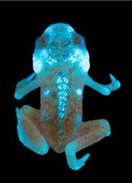Does alien life exist? Previous efforts to search for extraterrestrial life have only yielded inconclusive answers. Recently, however, two astronomers at Cornell University pioneered a new method of detecting extraterrestrial life. Jack O’Malley-James, from the Cornell Center for Astrophysics and Planetary Science, and Lisa Kaltenegger, from the Carl Sagan Institute, found that alien life on extrasolar planets might absorb the ultraviolet (UV) radiation released from red dwarf stars, re-emitting it as a different color of light that a powerful telescope could then detect. The project took approximately three years of research and was published in Oxford University Press’s Monthly Notices of the Royal Astronomical Society.
Red dwarf stars are far smaller and cooler than our Sun. Thus, for a planet orbiting a red dwarf star to be habitable, it must orbit at a shorter distance than the Earth orbits the Sun. But being too close can also be dangerous. In the case of exoplanets orbiting red dwarfs, they are subjected to frequent bursts of stellar UV radiation.
“This puts any life on these worlds at considerable risk from deadly stellar flares,” O’Malley-James said. “As part of my research, I look into ways in which life could thrive on worlds like these, even with all the challenges thrown its way by a red dwarf sun.”
And these challenges are daunting. Not only does UV radiation cause harmful mutations, but shorter UV wavelengths are damaging enough to make it harder for life to evolve in the first place. Even worse, an ozone layer—like the one protecting planet Earth—might not exist on these other planets. As a result, any potential life would probably develop UV-protection methods such as living underwater or underground, making it harder for scientists to discover. O’Malley-James said that these adaptations might make an inhabited planet look uninhabited.
But these otherworldly organisms might develop a more interesting protective mechanism: photoprotective biofluorescence. “Fluorescence describes the process of absorbing light of a certain wavelength or color, removing some of the energy stored in the light, then re-radiating the now lower-energy light, which then has a longer wavelength or different color,” O’Malley-James explained. Proteins in the skin tissue of living organisms can do this process, allowing for the development of biofluorescence. This fluorescence can then be used as sunscreen-like protection, minimizing the impact of UV rays. Reemitted light, however, is barely visible if at all, meaning biofluorescent organisms are hard to detect even on Earth.
On the planets orbiting red dwarfs, re-emission of wavelengths creates a temporal biosignature, which in turn increases detectability. The research explores the idea of using the data from high-powered telescopes to create a color-color diagram that differentiates exoplanets with a potential fluorescent biosignature from planets without it. Thus, scientists would be able to pinpoint planets that have this biosignature, and with it—extraterrestrial life. The usage of such a diagram would necessitate taking into account potential cloud covers and detections of different types of surfaces.
One of O’Malley-James’s favorite aspects of his research is the context it provides for life here on Earth. “For me, astrobiology research forces us to look back at our own planet from an outside-looking-in perspective,” he said. “Given the challenges faced by the world today, fostering a global all-encompassing perspective could ultimately benefit us all in the long term.”
Any methods of detecting potential extraterrestrial life increase our chances of finally answering the question of whether we are alone in the universe. O’Malley-James and Kaltenegger’s research adds one of the newest and most unique ideas to the list. The idea for the research project was born while O’Malley-James was working on a different project and reading a paper on corals’ use of biofluorescence as a protection against UV. He thinks that the project has not yet come to an end. Rather, it is just the beginning of a new way of answering the millenniums-old question that has awoken the curiosity of millions of people: are we alone in the universe?

